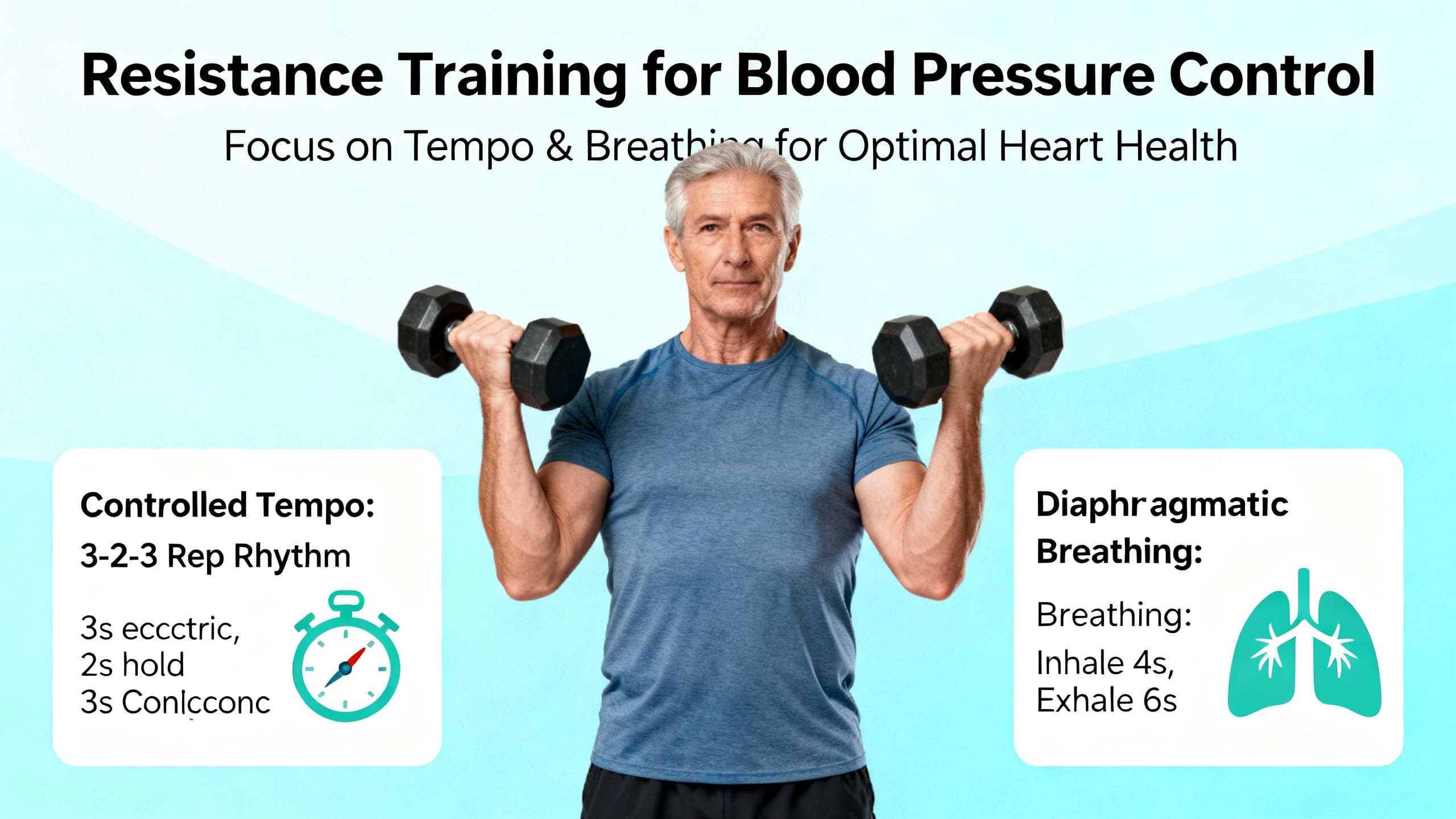Introduction
Elevated blood pressure is a major risk factor for heart disease—a leading cause of morbidity and mortality worldwide. Integrating heart health practices such as resistance training and mindful exercise strategies offers a path toward an optimal heart. This comprehensive guide explores evidence-based set-rep schemes, tempo, and breathing tips that effectively reduce blood pressure spikes while building strength. Whether you’re concerned about hypertension or aiming to improve cardiovascular outcomes, understanding these structured approaches can help you protect and enhance your heart health. Read on to learn practical science-backed methods to get stronger while safeguarding your optimal heart.
What is Set‑Rep Schemes, Tempo, and Breathing Tips That Reduce Pressure Spikes While Building Strength?
Set-rep schemes refer to the specific combination of exercise repetitions (reps) and sets performed during resistance training. Tempo describes the speed at which each phase of a repetition is performed, while breathing tips focus on how to inhale and exhale to minimize acute blood pressure changes. These variables were developed and refined in sports science settings to optimize both strength gains and cardiovascular safety—key determinants for heart health and achieving an optimal heart. Research shows that structured resistance training, especially with controlled tempo and proper breathing, can have beneficial effects on blood pressure and overall cardiovascular function [Cornelissen & Smart, 2013][Liu et al., 2020].
Benefits and Outcomes in Heart Disease
Incorporating the right set-rep schemes, mindful tempo control, and strategic breathing techniques into strength training is shown to:
- Lower blood pressure both acutely and over time, supporting overall heart health [MacDonald et al., 1999].
- Reduce the risk of arterial stiffness and plaque buildup, further protecting an optimal heart [Cornelissen & Smart, 2013].
- Modulate cholesterol and inflammatory markers linked to heart disease [Liu et al., 2020].
- Limit dangerous blood pressure spikes during lifting with controlled exhalation and submaximal set loads [Polito & Farinatti, 2009].
These mechanisms make resistance training designed with heart health in mind a powerful tool for preventing and managing cardiovascular disease, ultimately fostering an optimal heart.
Research Insights
Recent research highlights the cardio-protective effects of resistance training when properly tailored:
- A systematic review found that moderate-intensity resistance training (2–3 sets of 8–12 reps, slow tempo) lowered systolic and diastolic blood pressure in hypertensive individuals [Cornelissen & Smart, 2013].
- Studies confirm that slow concentric and eccentric movements (e.g., 2-second lift, 4-second lower) minimize blood pressure spikes compared to rapid repetitions [Liu et al., 2020].
- Emphasizing exhalation during exertion (e.g., breathing out as you lift) effectively avoids sudden increases in intrathoracic pressure that can stress the optimal heart [MacDonald et al., 1999].
- A 2021 guideline from the American College of Sports Medicine recommends these principles for hypertension management and heart health improvement [ACSM, 2021].
Practical Applications
Here’s how to apply heart-healthy resistance training principles in your daily workouts:
- Set-Rep Scheme: Aim for 2–3 sets of 8–12 repetitions at moderate intensity (about 60–70% of your max). This range is shown to enhance strength while benefiting optimal heart health [Cornelissen & Smart, 2013].
- Tempo: Slow, controlled lifting (e.g., count 2 seconds to lift, 4 seconds to lower) reduces peak blood pressure by allowing the vascular system to gradually accommodate the exertion [Liu et al., 2020].
- Breathing: Always exhale during the effort phase (lifting/pushing) and inhale during the easier/return phase. Avoid breath-holding (Valsalva maneuver), which can sharply raise blood pressure [MacDonald et al., 1999].
- Frequency: Perform resistance training at least twice weekly. Those with hypertension or cardiac concerns should seek guidance from a medical professional before starting.
- Populations: Especially beneficial for middle-aged adults, those with pre-hypertension, or with a family history of heart disease [ACSM, 2021].
Risks & Limitations
While evidence is strong for heart health benefits, certain risks warrant attention:
- Inappropriate technique (such as heavy straining or breath-holding) can cause blood pressure surges, especially in people with established heart disease [MacDonald et al., 1999].
- Some research is limited by short study durations; long-term cardiac safety from various set-rep schemes is still being evaluated [Cornelissen & Smart, 2013].
- Not all populations are studied equally—individuals with advanced heart failure or arrhythmias need tailored programs, typically supervised by specialists [ACSM, 2021].
Key Takeaways
- Structured set-rep schemes and slow tempo support an optimal heart by lowering lifting-associated blood pressure spikes.
- Proper breathing during resistance training is crucial for heart health.
- Moderate intensity and frequent training yield the most cardiovascular benefit.
- Consulting with health professionals ensures safety for those with heart conditions.
Frequently Asked Questions
1. Can I lift weights if I have high blood pressure?
Yes—when following recommended set-rep schemes, slow tempo, and proper breathing, resistance training improves blood pressure and heart health, as shown in research [Cornelissen & Smart, 2013].
2. What is the safest way to breathe during strength training for optimal heart health?
Exhale during the effort (lifting or pushing) and inhale during the return. Avoid holding your breath to prevent dangerous spikes in blood pressure [MacDonald et al., 1999].
3. Are slow reps better for my heart than faster reps?
Yes, slower tempos reduce the risk of acute blood pressure surges and are shown to benefit heart health and improve cardiovascular outcomes [Liu et al., 2020].
Suggested Links
- American Heart Association: Resistance Training for Heart Health
- NIH: Exercise and Physical Activity
- PubMed: Resistance Training and Hypertension
Conclusion
Embracing thoughtful resistance training approaches—including proper set-rep schemes, controlled tempo, and mindful breathing—empowers you to build strength without putting your heart at risk. These habits, backed by clinical research, promote an optimal heart and sustained heart health. Whether new to exercise or managing high blood pressure, integrating these evidence-based practices can help you thrive. Start small, stay consistent, and consider working with a healthcare provider or exercise professional for a program tailored to your needs.



